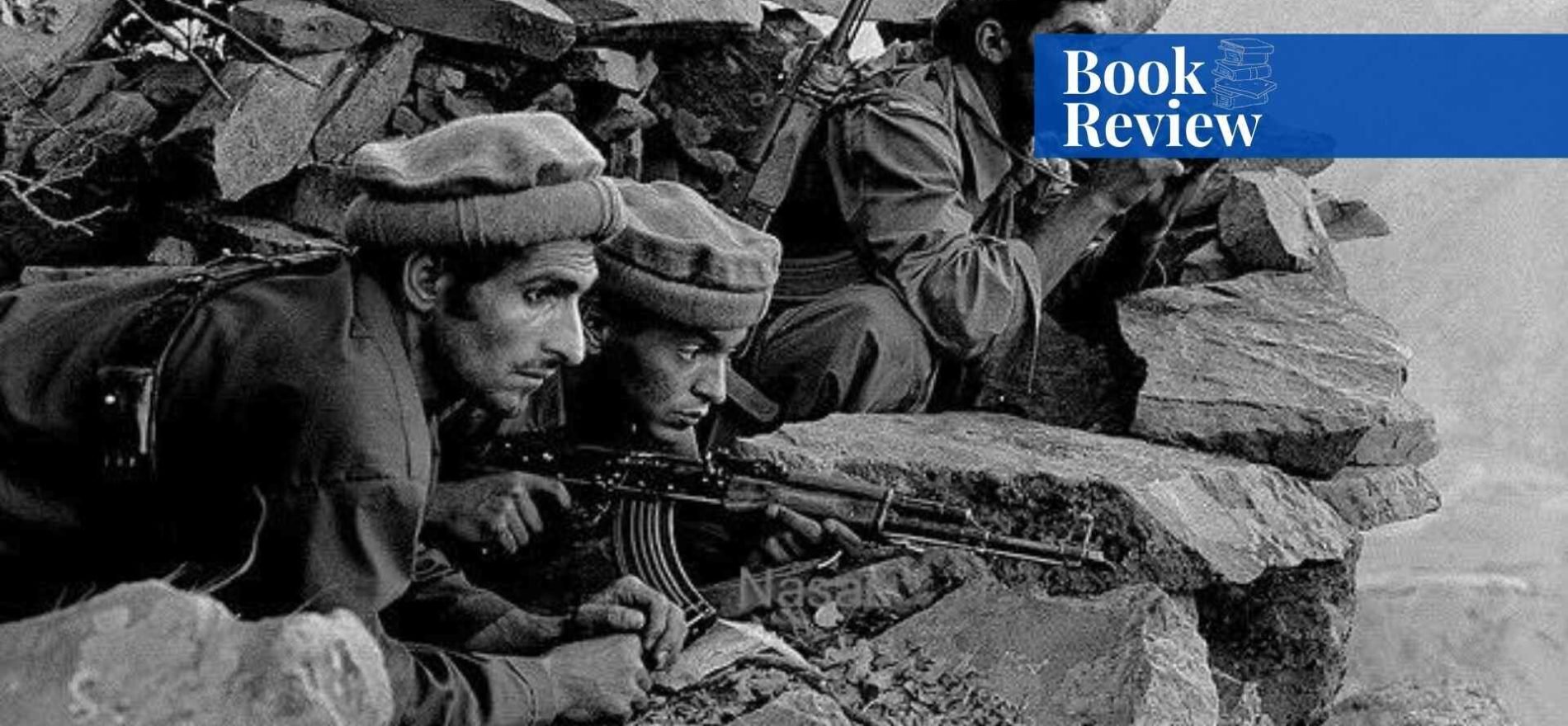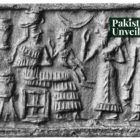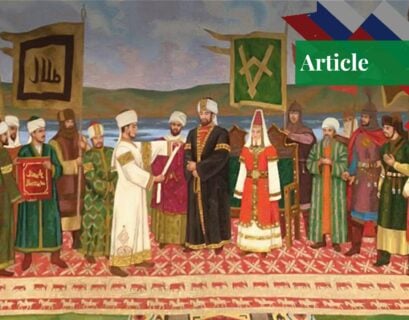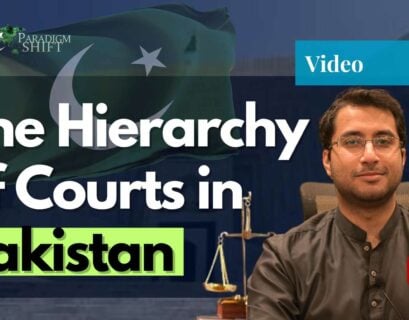Syed Haris Shah is a pupil of peace and conflict studies at National Defence University, Islamabad.
Introduction
“The Great Gamble: The Soviet War in Afghanistan,” published in 2009, is authored by Gregory Feifer, a Ukrainian journalist who worked for the National Public Radio in Moscow, Russia. His other works include “Russians: The People Behind Power” and “Spy Handler.” The Great Gamble gives an overview of the ambitions of the former Union of Soviet Socialist Republics (USSR) towards Afghanistan and its indirect and direct role, through its intelligence agencies and military forces, inside Afghanistan.
The book’s central idea is to give lessons to the United States that was involved in the so-called War on Terror in Afghanistan after the 9/11 attacks in 2001. The events developed after the fall of the Kingdom of Afghanistan led by King Zahir Shah and after the increasing influence of the Soviet Union in Afghanistan turned it into an important region for the last stages of the Cold War era.
The Great Gamble: The Soviet War in Afghanistan is being divided into eight chapters among which, the first three chapters are based on the initial or pre-launching period of the Soviet invasion of Afghanistan, the fourth, fifth, and sixth chapters are regarding the major events that occurred in this war, while the last two chapters are about the end of the war and its consequences for the region.
Synopsis of “The Great Gamble: The Soviet War in Afghanistan”
Daoud Khan’s Fall
Afghanistan had a political scenario in which the situation deteriorated after the fall of King Zahir Shah in Afghanistan. The government of the former monarch and the cousin of King Zahir Shah, Sardar Daoud Khan, organized a coup d’état in Kabul and seized power by proclaiming the establishment of a republic in Afghanistan. It was a time when communists and socialists were gaining influence in power circles and were also a part of the military and civil bureaucracy of Afghanistan.
The changing scenarios gained the attention of the Soviet Union and the Politburo of the Communist Party, holding the entire power share in Afghanistan. The USSR encouraged the Saur Revolution in Afghanistan. The revolution overthrew the regime of Sardar Daoud Khan, as it was gaining a better relationship with the Western world, and replaced it with the Peoples Democratic Party of Afghanistan (PDPA).
Sardar Daoud Khan had established relations with both the US and the USSR. He was believed to be getting out of the Soviet hands. The Saur Revolution started when protests broke out after the funeral of communist activist Mir Akbar Khyber, who was assassinated, and the blame was placed on the secret police of Khan’s government.
Daoud Khan was killed, along with his family, by Marxist military officers who rebelled from the Afghan Army. As a result, the political power came into the hands of the communists and the PDPA formed the Democratic Republic of Afghanistan under the rule of Nur Muhammad Taraki.
Factions, Militias, & Afghanistan
The Soviet Union supported the new government with military equipment and finances, but the political situation did not favor stability as the crisis between factions in the PDPA was instigated.
The Khalq faction was in control of the government under Nur Muhammad Taraki while the other faction – Parcham – was under the control of Babrak Karmal, the then-ambassador of Afghanistan. The two factions were already in conflict when the local resistance groups of ethnic Tajiks, Hazaras, and Nuristanis began to quarrel with state authorities due to the land reforms introduced by the communist government in Afghanistan.
There were unaccounted detentions and killings by the Afghan government that created distrust between the ruling party and the rural population of Afghanistan. The arrests of major tribal and religious leaders for not accepting the new policies of the communist government and mass murders by governmental troops instigated tribal Baloch, Pashtun, and Tajik leaders to carry out low-level armed resistance against the government. They either targeted the police or military officials or looted government assets.
The government of Nur Muhammad Taraki started cooperating with the USSR—in terms of intelligence-based coordination as well. This gained both local and international attention as the United States and Pakistan began to worry about the increasing influence of the USSR. The local Afghan tribesmen and leaders began to create smaller militias on the basis of ethnic identities or protection of religious and cultural values to create small strongholds in the Pashtun and Tajik-dominated areas of Afghanistan.
The United States also began to dictate its allies to remain focused on developments of the USSR towards Afghanistan. Anyhow, the government of Nur Muhammad Taraki was overthrown, and Hafizullah Amin became the president of Afghanistan.
Operation Storm-333: The Soviet Invasion of Afghanistan
President Amin refused to give space to the military troops of the Soviet Union within Afghanistan. Due to his refusal, he was accused of being a CIA (Central Intelligence Agency) agent, and there was an outspread of propaganda against him by Afghanistan’s pro-Soviet military and intelligence officials. The propagandists urged him to give up on the matter of the Durand Line in favor of Pakistan.
During this time, violence and disruption in the countryside increased and the Afghan government, with air and intelligence support from the Soviet Union, began cracking down on the emerging militants inside Afghanistan. The government of Hafizullah Amin was facing major challenges in Afghanistan; despite having advisors from the Soviet Union and the heavy presence of KGB officials in Kabul, he opposed the intervention of Soviet military forces in Afghanistan.
He was deposed of power and killed by pro-Soviet Afghan troops and the soldiers of the Soviet army during Operation Storm-333 – the Soviet invasion of Afghanistan. Operation Storm-333 was launched by the Soviet army and air force to install a pro-Soviet puppet in the shape of Babrak Karmal, and to directly deal with Islamist and ethnic militias rising against communism in Afghanistan.
Hafizullah Ameen and his family were killed at Tajbek Palace, and the Soviet Union got direct control of Afghanistan to counter any possible US involvement. Loyalist troops of Hafizullah Amin in the Afghan police and army retaliated against the Soviet invasion of Afghanistan, but they failed and around 1000 Afghan troops surrendered to the Red Army in Kabul. 1979 was a year when the Soviet Union invaded a state that was its ally and killed its president due to distrust.
The Soviets dig into Afghanistan by establishing military bases, taking control of the country’s border areas, and by stationing joint military parties of the Afghan Army and the Red Army. The KGB officials were looking over the political, military, and economic affairs of Afghanistan, being in direct contact with Moscow to handle the affairs of the government under President Babrak Karmal.
Internationally, the USSR was considered as another major threat to international security and peace by US President Jimmy Carter. The 1980 Moscow Olympics were boycotted by the US and its allies. When the troops of the Red Army took control of Afghanistan, the Soviet generals and military commanders entered Afghanistan by landing at Bagram Airfield near Kabul, on New Year’s Eve in 1980.
Many soldiers and military officials considered the Soviet invasion of Afghanistan as a success and believed that they broke the legacy of the Persian, Greek, and British empires that failed to conquer Afghanistan. Nevertheless, they did not know the circumstances that they would face in the future.
As Soviet troops began to use intelligence for conducting gunship and aerial raids and for intruding into countryside areas, the leading mujahideen leaders and the defected Afghan Army soldiers and local tribesmen began to use guerilla tactics against both the Afghan and Soviet troops. In the beginning, the losses of the armies were less, and the civilian causalities were increasing because the Soviet army was deliberately bombarding the rural and tribal areas of Afghanistan.
The Role of Pakistan in Ending the War
At this point, the anger in the people of Afghanistan increased, and even Pakistan and the United States began to worry about how to restrict the Soviet military by engaging it through unconventional ways. Special committees of the US Congress were established and Pakistan, under the military dictatorship of General Zia Ul Haq, began looking towards Capitol Hill and the White House for gaining military and financial support.
Pakistan even provided safe haven to Mujahideen fighters in Pakistani tribal areas and anti-communist propaganda was started to influence the people in both Afghanistan and Pakistan. A refugee crisis also started as Pakistan opened borders to Afghan refugees and international organizations began to set up offices and camps in northwestern Pakistan to assist on a humanitarian basis.
Mujahideen fighters gained ground as major mujahideen leaders, including Gulbuddin Hekmatyar, Abdurrab Rasul Sayyaf, Burhan Uddin Rabbani, and varying other militant leaders and warlords were provided safe havens in Pakistan. The Pakistani government began to bring them under the umbrella of the “Peshawar Seven”—later known as the “Peshawar Eleven.”
The mujahideen leaders were grouped under one agenda and that was to quell the Soviet troops from Afghanistan and to decide the future of the country. They were provided training in guerilla warfare, using small firearms, and building explosives, inside camps operated by Pakistan’s Inter-Services Intelligence (ISI). The US and Britain gave them weapons that were used in World War I and World War II and provided smaller sums of money.
The mujahideen leaders of Afghanistan were aligned with the communist politicians and defected military officials supporting the communist ideology of Maoism. As such, they were tilted towards Beijing instead of Moscow. ISI provided intelligence to militants in Afghanistan to capture strategic points and even helped the Afghan mujahideen politically motivate the rural population to fight for the cause of Afghan freedom and Islam against the USSR and the government of Afghanistan.
The mujahideen leaders were organized under the direct command of Islamabad and religious tendencies in Pakistan were encouraged to coordinate with them. Although the Soviets were seeking victory in Afghanistan, the Chinese and Israeli intelligence officials secretly met with the Pakistani authorities and provided weapons of Soviet origin, as well as Chinese variants of Russian weapons, to the mujahideen fighters. There were also provisions of military gear and navigational technologies to them under the CIA’s program.
Moreover, the CIA’s station chief in the US embassy in Islamabad personally coordinated with top military leadership to provide a sum of around $300 million to funnel towards the mujahideen fighters. The tides turned in Afghanistan with the introduction of American-made Stinger missiles to the mujahideen fighters and the provision of advanced mortar technologies.
The ending sections of The Great Gamble: The Soviet War in Afghanistan are regarding the withdrawal of the Soviet troops from Afghanistan after the Geneva Accords were signed. The conflict ended but in the aftermath, the civil wars intensified and the foreign fighters that joined this conflict began to organize as international militant organizations. Terrorism and extremism began spreading while the United States committed the same mistake of invading Afghanistan—all the while knowing the historic and geopolitical aspects of Afghanistan.
Analytical Review
The points that are included in this book deconstruct the very core of the entire Soviet-Afghan war that was started in 1979. During the Soviet invasion of Afghanistan, the USSR did not know the reality as it invaded the state through uncalculated long-term measures. Moreover, there were internal political and economic issues in the Soviet Union, from which the popular attention was diverted towards Afghanistan.
The book also denoted the Western perspective as well. The Great Gamble: The Soviet war in Afghanistan highlights that involvement in Afghanistan was not only uncalculated on part of the USSR but also from the side of the United States, Pakistan, and Saudi Arabia. The world had to face the consequences of this war because the international community did not hold anyone responsible, and take the matter of disarmament and peacebuilding in Afghanistan seriously.
Afghanistan remained in a situation where the regional and global powers just used it as a ground to initiate their great games while the conflict in the state persisted.
Conclusion
Gregory Feifer’s The Great Gamble: The Soviet War in Afghanistan aptly explains that the goals of the Soviet invasion of Afghanistan had already been planned by Moscow years before the invasion. The Soviet Union was indirectly intervening in the political matters of Afghanistan, with the KGB backed varying coups and top-level assassinations. The war in Afghanistan had its consequences because both Pakistan and the US took uncalculated measures and then conducted diplomatic blunders, intensifying the extremism and terrorism in the region.
If you want to submit your articles, research papers, and book reviews, please check the Submissions page.
The views and opinions expressed in this article/paper are the author’s own and do not necessarily reflect the editorial position of Paradigm Shift.



















